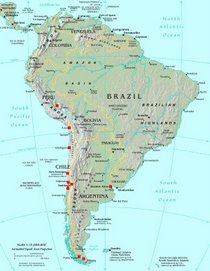The Lives of Others
On Friday, we had a mandatory field trip with a theme of "The Stasi Legacy." The Stasi is the common name for the Ministry of State Security (Secret Police) that existed in the German Democratic Republic (East Germany) from 1950 to 1989. If you have seen the movie, "Das Leben der Anderen" ("The Lives of Others") you already know some about the organization.
Splitting our huge group into two smaller ones, my half headed to the old Stasi headquarters, where they had their offices. A once pretty huge compound, now holds the Stasi Museum. We had a guided tour with Stefan, who gave us a good overview of the Stasi and what they did, as well as a highlighted tour of the museum.
The museum is in the main building of the complex, where the minister had his office. Two floors of the museum are filled with information about the Stasi, as well as some of the techniques that they used to spy on citizens. The Stasi was huge, having 91,000 employees and 300,000 informants for a country of only 16 million people. Stefan explained that they basically spied on everyone at some point, and made very extensive files of some people. Some of the technology that they had was pretty cool and probably very effective. But they didn't just have to use technology, they also blackmailed and bribed a lot of people to be informants, making them reports on the activities of their friends, neighbors, family members, clients, etc.
The second part of the museum includes the offices of the minister and others, that have been preserved to their conditions during the GDR. The coolest thing about these rooms was that they were used to film scenes from "Das Leben der Anderen," and I definitely recognized them.
After our two hour tout there, we had lunch and then headed to the Stasi prison. This extremely secret prison was first used by the Russians during their occupation of East Germany, where they used the basement and physical torture to get confessions from prisoners. The Stasi then took the building over, and built a whole new prison. It was only a temporary prison, where they took suspected political "criminals" to get confessions out of them. Instead of using physical violence, they took a more mental approach. The prisoners were always in complete isolation, never got to even see any other prisoners, and only got to speak to their interrogators. Our guide explained that this would make it so that they felt a bond and relationship to their interrogator, hopefully making confessions easier.
Overall what the Stasi did was insane for such a time, but it did remind me a lot a similar field trip we took in Chile to Villa Grimaldi. Although what Pinochet did to his political prisoners was physically much worse, the dictator violating free speech and thought by taking in political dissenters and trying to get them to confess was very familiar. Our guide reminded us that even though there is a lot of Ostalgie (nostalgia of East Germany), there was a dark side to it that severely effected the lives of many people.


1 comment:
Hej, på något sätt hade jag missat den här posten. Tänkte när jag läste att du kanske skulle finna något liknande i Guantanamo Bay........
Post a Comment